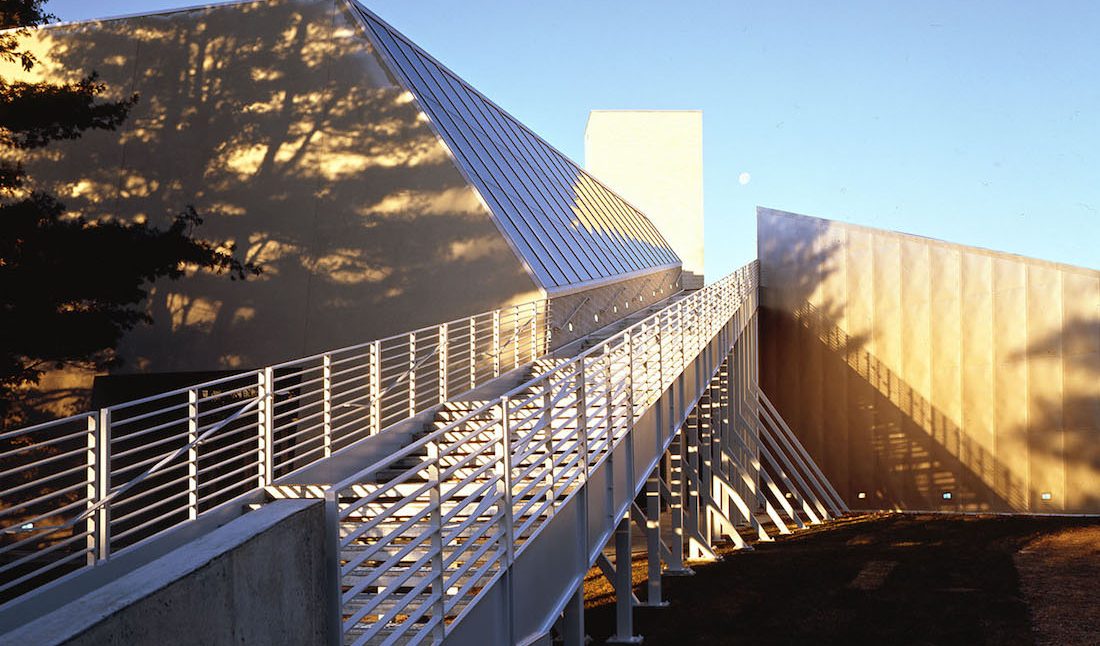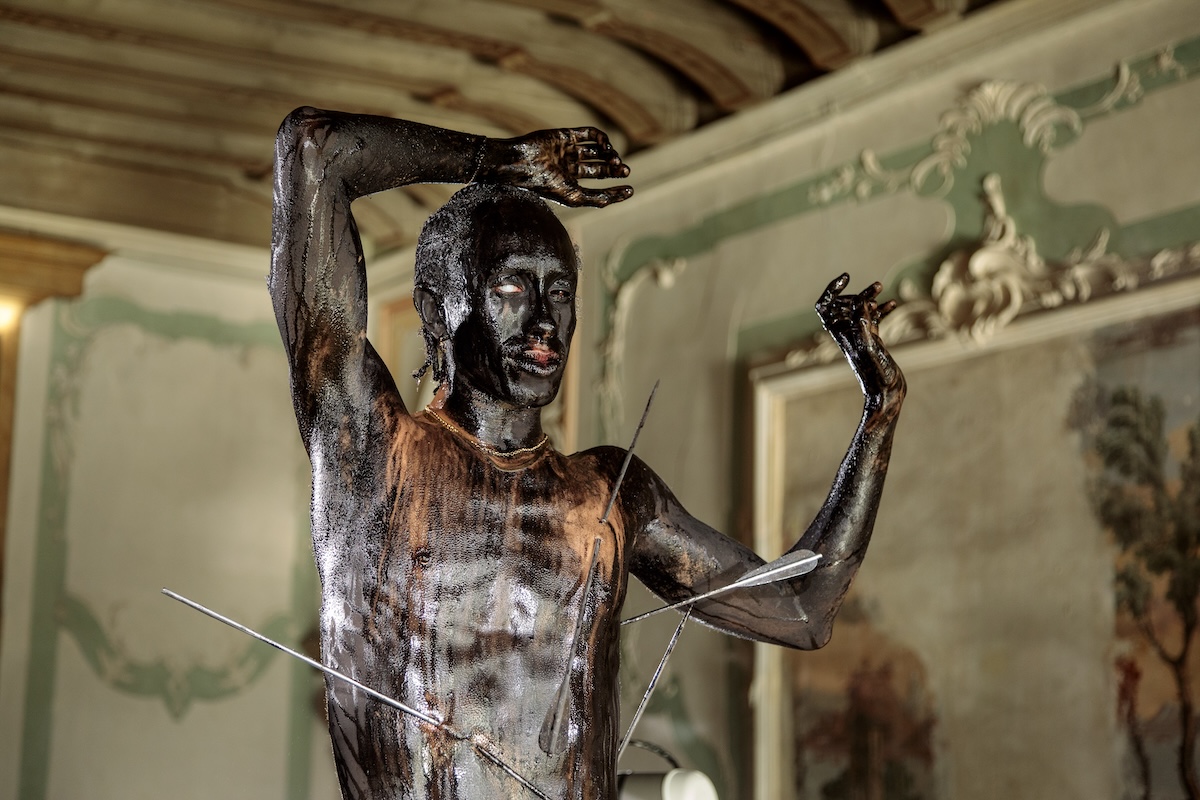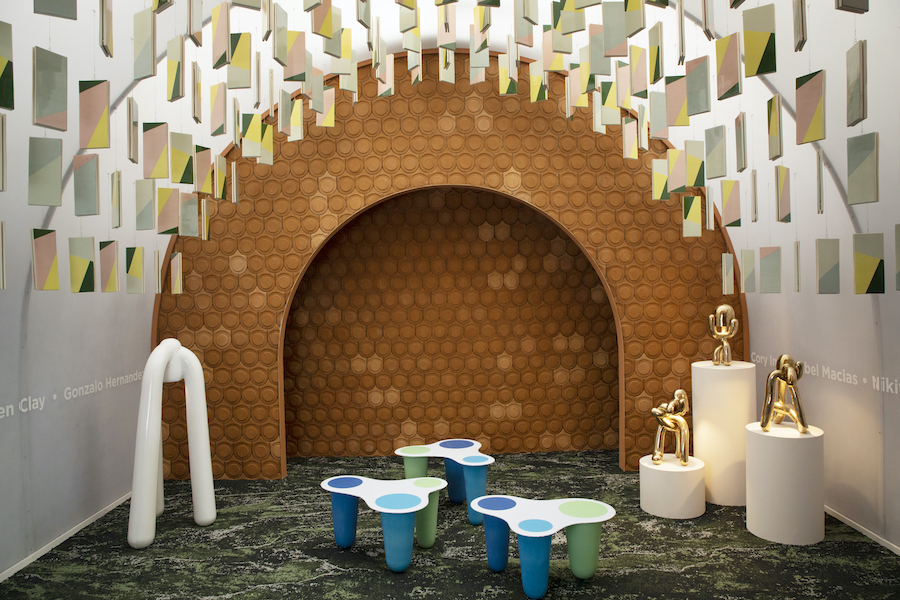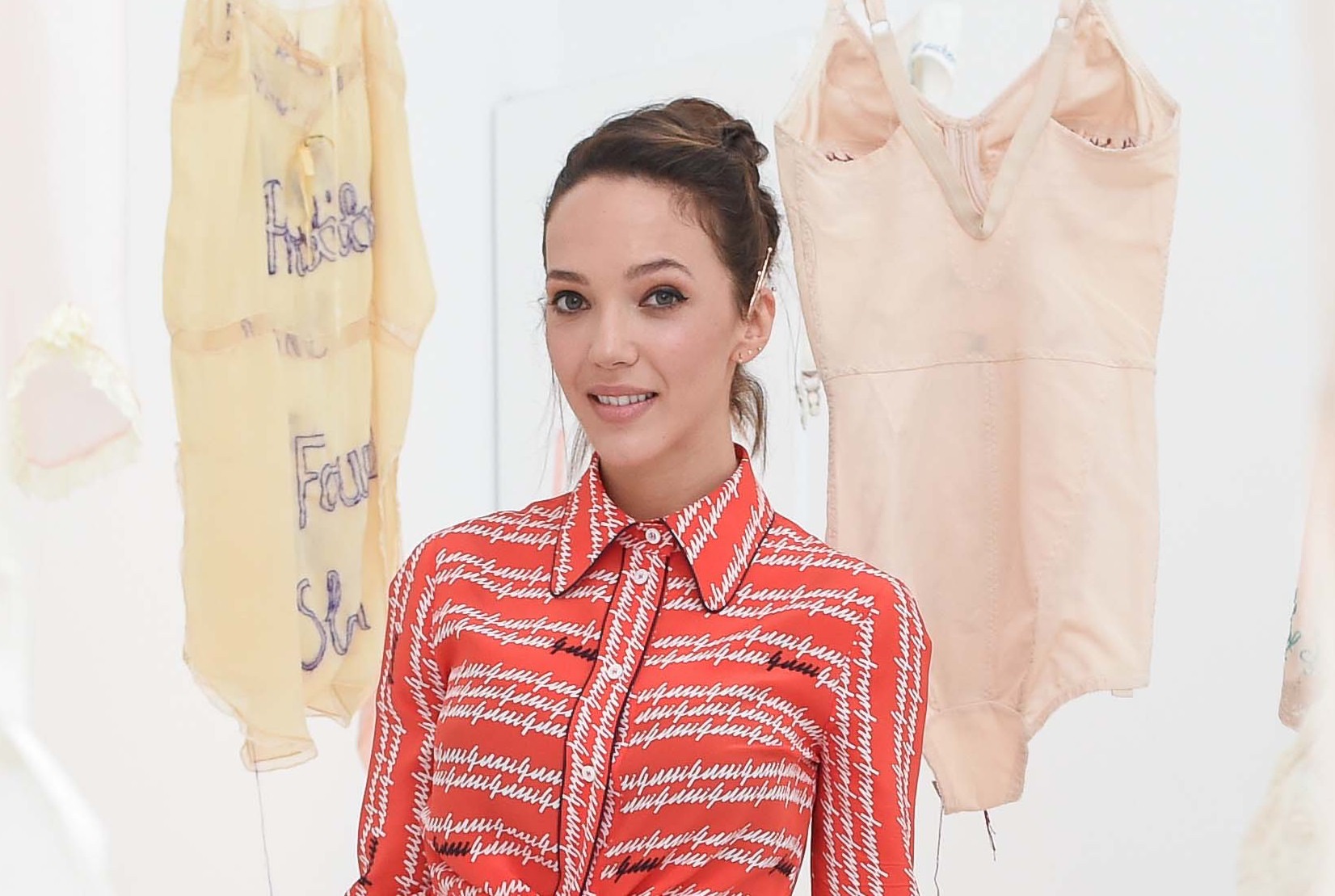Last November, Isolde Brielmaier was named the Curator-at-Large at The Tang Museum at Skidmore College. As a curator, Brielmaier has had a significant career working in and with museums like the Guggenheim, The Bronx Museum of Art, and the SCAD Museum of Art, where as Chief Curator she helped to inaugurate and set the tone for the institution.
Since returning to New York from Savannah, she has been the Executive Director of Arts, Culture & Community at Westfield World Trade Center, and the Assistant Professor of Critical Studies in Tisch’s Department of Photography, Imaging and Emerging Media at New York University. All along the way, she has been driven by collaborations with artists like Ellen Gallagher, Bharti Kher, and Fred Wilson.
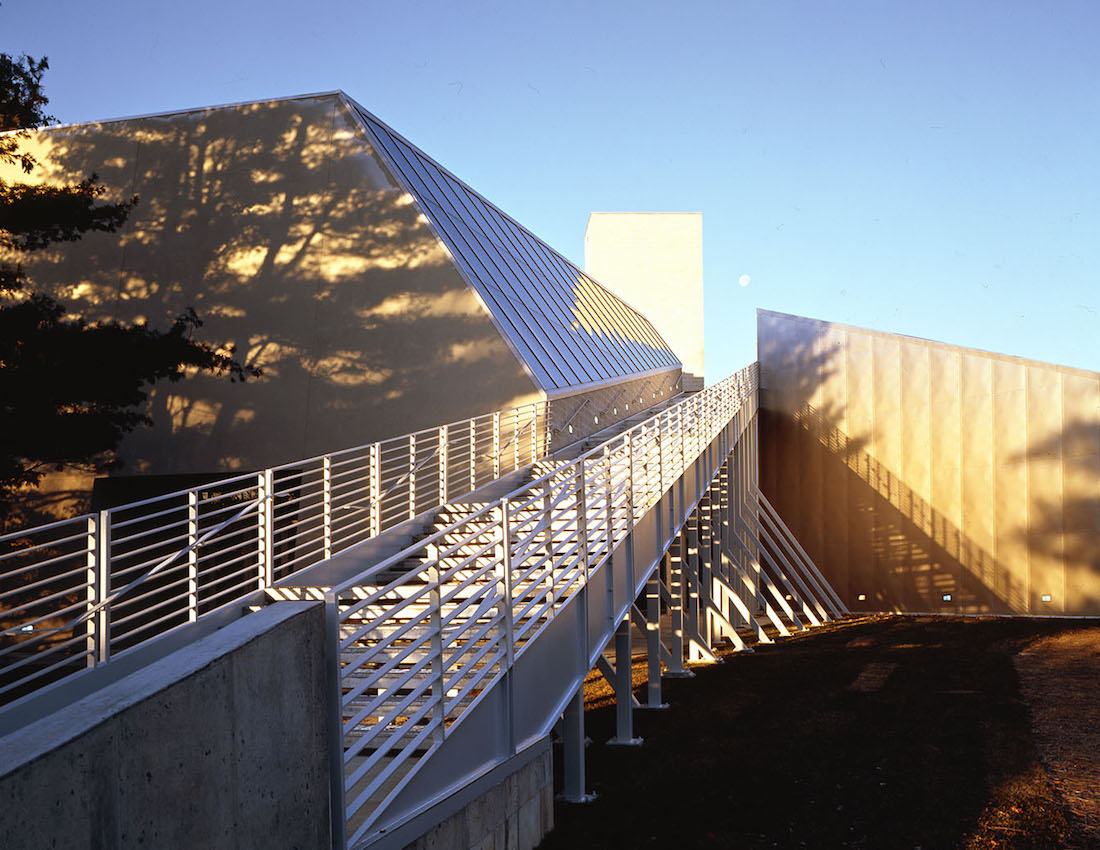 Courtesy of the Tang Museum at Skidmore College, photo by Tim Hursley.
Courtesy of the Tang Museum at Skidmore College, photo by Tim Hursley.
Our conversation for The Ascent this week is part of our spring 2017 Art issue, focusing on women in the arts. Brielmaier has had an interesting path, beginning her foray into the arts as a classically trained dancer, interning at art museums, all while doing social justice work. She spoke with us in late November (just two weeks after the election), about being able to find that connective thread in her career, despite what may have felt like disparate interests early on. She shared her excitement for the possibilities of her new position at The Tang, the business acumen she’s gained while working at Westfield World Trade, and her thoughts on the resiliency of women.
WHITEWALL: I usually like to start with an earlier question, about the role that art played in your life early on. Was it something you were exposed to from a young age?
ISOLDE BRIELMAIER: My connection to the visual arts came through the performing arts. I’m a former dancer. I was classically trained in the Balanchine tradition. I remember being inspired by the theater and by dance, not only the dancers and the movement, but the costumes, the backdrop, and the way it all came together to create an experience that would transport me.
I grew up in Seattle and for a portion of time in Hamburg, Germany. I was really fortunate to go to public schools that were engaged in subsidized art programs. In Seattle they have a huge theater community and we used to go to these abridged versions of Shakespeare or La Traviata or the ballet. I had parents who took advantage of any free program in a museum or arboretum. So I grew up around creativity in the arts.
WW: What made you want to pursue a professional career in the arts?
IB: It was always flanked by being a child of immigrants. [My parents] had a very strong grounding in social justice issues. I went to Columbia and I danced throughout my entire college career, but I was a history and sociology major. I was very focused on issues around gender and race. When I graduated I worked at an organization that focused on criminal justice reform, which is still a huge issue for me. And then I would intern at museums. When a position came open at the Guggenheim, I was encouraged to go interview and I ended there for three years. That solidified my stake within the visual arts and the contemporary art world.
I went to graduate school and got my PhD. I was not a linear path kind of gal. It was a bit of a lonely road when I was younger, but I feel like now, with all of the lines being blurred and so many people—especially women—wearing all these different hats and bringing them under the rubric of “arts and culture,” I finally feel like I’m on trend!
WW: Given your background, in performing arts, I imagine the collaborative nature of theater and dance, that skill must have come up within a museum setting?
IB: Absolutely. I think, the performance piece is two fold. Number one, performance is about audience. The idea is to work on something and express yourself through movement and be able to engage with the audience. As a curator I’m constantly thinking about audience. Almost all of the artists that I’ve worked with, many whom were emerging at the time I was emerging like Kehinde Wiley, Wangechi Mutu; but even artists that are much more established like Bharti Kher, Carrie Mae Weems, these are people that are very focused on a performative aspect. It’s about engaging with and connecting with the viewer.
It’s funny, as I’m older and more experienced and moving on in my career, I see all of these connections from my earlier work now. It’s taken me a long time to make those connections, but it’s cool when you begin to see a little bit of continuity.
WW: So you went from the Guggenheim to the Bronx Museum, and then were Chief Curator at SCAD for three years. What do you enjoy about curating within a museum setting?
IB: I came down to SCAD to open up their museum. When I came to Savannah it was still in the hard hat stage. We opened it and set the tone for their programming. That was an amazing experience. We were able to attract and work with dream teams.
For me, SCAD was about working with a broad range of artists. Artists would come down and would say, “I want to do ‘X,’” and we would be able to do it. That was pretty amazing. I did a lot of solo shows with artists. I think that is almost what carried me back New York, this desire to be able to work with an artist one-on-one and build from the ground up and help her realize her vision.
It’s less interesting to me to go about doing things on a solo basis. It’s much more interesting to start sitting around a table and brainstorming and debating and building from there. I think a lot of that started at SCAD. I had a really great team down there, as well.
WW: You are also currently the Director of Arts & Culture at Westfield World Trade Center. You’ve said, “My hope is that everyone who moves through this space will be inspired by unexpected and enriching cultural experiences.” What interested you about that role at Westfield World Trade? I mean, talk about audience!
IB: The piece that was really exciting to me about World Trade is the partnership between Westfield and the Port Authority. I sit in on all of the business meetings, the developing meetings, the leasing meetings. I really wanted to be challenged in that way and up my skill set. I feel like many creative spaces would really benefit from more of a business acumen.
My focus is that large Calatrava Oculus. So there’s the opportunity to think about realizing things with artists on a larger scale and partnering with institutions. We are in the middle of a partnership with the New Museum around more of an arts education angle.
WW: In November you were named the Curator-at-Large for the Tang Museum at Skidmore. How do you envision your role there?
IB: I have known Ian Berry [the museum’s director] close to eight or nine years. I love the Tang. I think they are very forward-thinking in their exhibitions and their commitment to artists, specifically underrepresented artists like artists of color and women. They just did that phenomenal Alma Thomas show. They have a really great collection that, and I know Ian would agree, they could maximize even more. I think they are poised and have solidified their role clearly on campus, but the next step is to increase the visibility, increase the audience, and turn up the volume on what they are doing.
We’re thinking very creatively about ways to extend a tentacle from the Tang into New York, but it doesn’t just have to be New York. I think of my role as partial producer, partial curator, and partial strategist. There will be some exhibitions, there will be some more thinking critically about the collection, publications, and also programming.
WW: One part of the position will be working with the Tang team on Skidmore’s Mellon Foundation initiative that aims to expand scholarship and access to artworks by artists of color. In what ways do you see that being done?
IB: If you look back at the history of their exhibitions, I would say close to half of them have always included and presented, in critical and substantive ways, the works of artists of color and women. Ian has a lot of foresight, acknowledging that’s a great start for an institution like the Tang, but there is a lot more work to do.
In art history there is the practice of looking back and rewriting these histories. But the other point is to think about the fact that we’re actually (clearly in the last two weeks) witnessing history, right? How do we go about staying ahead so we’re not always looking aback and rewriting, but we’re actually present and writing now? That’s one of the things we’ve been talking a lot about in relationship to the collection.
WW: Speaking of the past two weeks, as a professor at Tisch, or even working with the Tang, what has your experience been engaging with students since the election?
IB: The one thing I can say is thank goodness for my students. It was incredibly difficult, no matter where any of us were at, with the election. I walked into class and it was not pertinent to discuss final projects at that moment. It was pertinent to do a kind of feelings check-in. And then it was really pertinent to just to get them talking and allowing them the space to vent.
I actually started off by playing, a clip of Martin Luther King Jr.’s “I Have a Dream” speech. And my reason for doing that, as cliché as it may seem, was to show the students that there are remnants of what we are experiencing right now that have come up before. And in the moment, it’s a call to action, it’s a moment for all of us to rise and to speak truth to power. But it was also to show that we will be okay. It’s not going to be easy but we will be okay.
It’s funny, we underestimate, as I think every generation does, the younger generation. They are very astute. My students are coming from all different places—I had eight international students, I had some undocumented students, I had Muslim, Jewish, Christian students. They are very informed and they care. I left that class, I went into my office, I took a deep breath, and I felt hopeful. I felt like this going to be really hard. This is going to be really hard but I felt hopeful.
WW: You know, I was reading a recent interview you did with Vogue, and talking about your time at Columbia you said, “my time there really reinforced the idea that people of different cultural backgrounds and belief systems can come together to discuss shared ideas through art.” It feels like the art community has really been invigorated and reminded that this is important work.
IB: One hundred percent. I fully agree. And if anything, hopefully it invigorated women, too. There are a lot of causes and things that we need to stand up and fight and address and support. But also on a micro level, we really need to support other women and see other women as assets and collaborators. If I meet a fabulous woman, I’m thinking, “How can we support you? What can we do? You have to meet this person.”
We have a lot of power as women. As a species, we are incredibly powerful and resilient and we have done and can do such incredible things.
A version of this article will appear in Whitewall’s spring 2017 Art issue, out in April.






